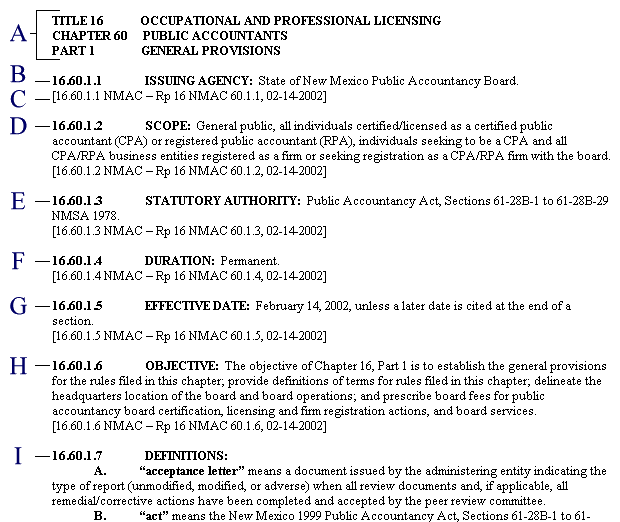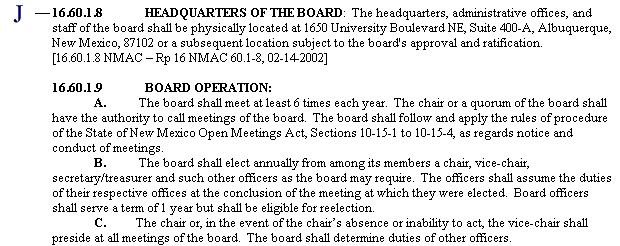Introduction
Rules adopted by agencies comprise the body of the State’s administrative law. What constitutes a rule is set forth in statute and further defined in Attorney General’s opinion (No. 93-01). Essentially, unless there is a specific statutory exemption, a rule is any “rule, regulation, order, standard, statement of policy, including amendments thereto or repeals thereof issued or promulgated by any agency and purporting to affect one or more agencies besides the agency issuing such rule or to affect persons not members or employees of such issuing agencies” (Section 14-4-2 NMSA 1978).
The administrative process is governed mainly by the language of an agency’s enabling act and the rules adopted by the agency. Agencies function only insofar as the legislature has given them the authority to function. That authority is defined through the agency’s enabling act, and is the fundamental source of an agency’s power. For example, the authority granted to an agency by the legislature, may be to regulate public utility companies, or set income levels and other criteria by which a person may qualify for government benefits. When an agency engages in rulemaking, the process requires the agency to give the general public notification that a rule is being considered, the general description of the proposed rule, and an invitation to any interested person to submit comments on the proposed rule. The agency reviews the comments and, when appropriate, incorporates suggested changes it received. Then, the agency adopts a final rule.
The State Rules Act, which the Commission of Public Records is charged with administering, establishes the basic requirements for filing and publishing executive-branch rules and for rule style and format. The Commission is also charged with publishing both the New Mexico Register, the official publication of notices of rulemaking and of adopted rules, and the New Mexico Administrative Code (NMAC), a topically organized compilation of current rules. The State Rules Act also directs each agency of the executive branch of state government promulgating any rule to place the rule in the format and style required by rule, New Mexico Administrative Code, Commission of Public Records, 1.24.10 NMAC (2/29/2000).
The objective of 1.24.10 NMAC is to establish standards for uniform rule filings in an easily understood and common format. These standards are designed to ensure that rules are readily identifiable and available for public inspection; that each rule filing can be historically traced from its current status back to the original rule filing; and that rule filings are structured for expeditious compilation into the NMAC. The NMAC is designed to promote access and assist research by adopting a system for uniformly organizing state rules that facilitates fully searchable electronic access. Additionally, it is designed to facilitate electronic publication and availability via the Internet.
Rule Organization
Rule text in the administrative code is found at the part level of the NMAC hierarchy [see Structure of the NMAC for more information]. Each part follows an established organizational structure. First there is the part heading, then there are seven mandatory sections, then more rule text follows, then the history of the part is located at the end. Each section in a part has an accompanying history note. Below are three excerpts from a part that show the established elements every part must have. Click on a letter to see the explanation of that rule element.



